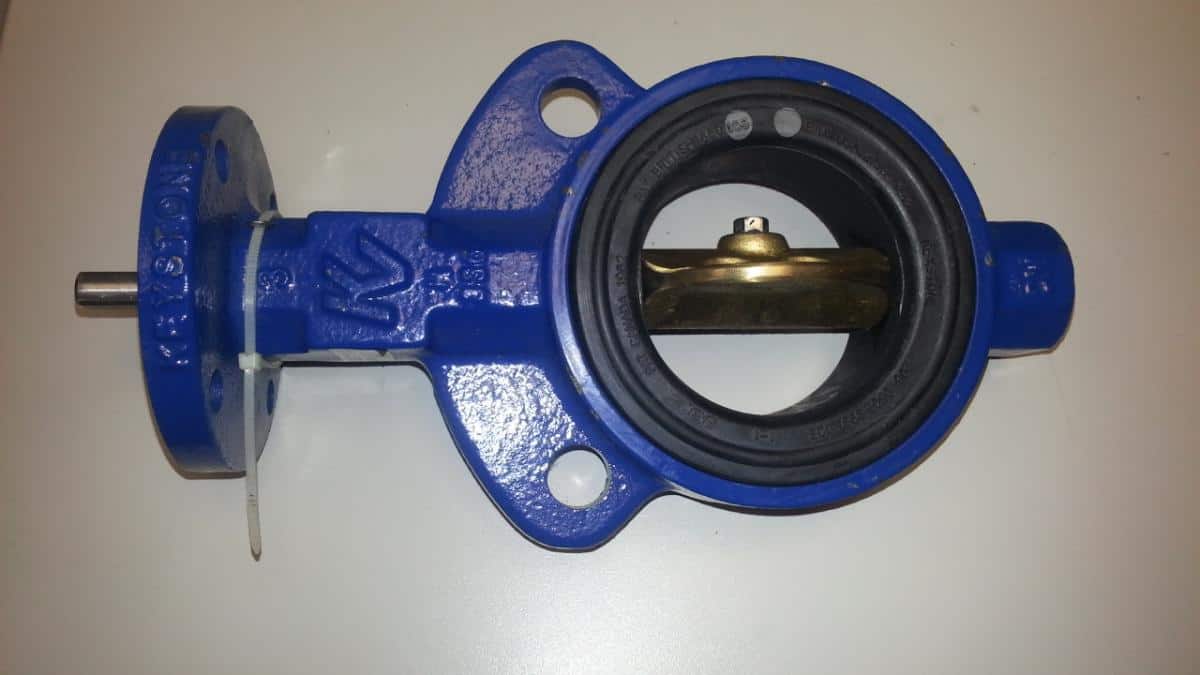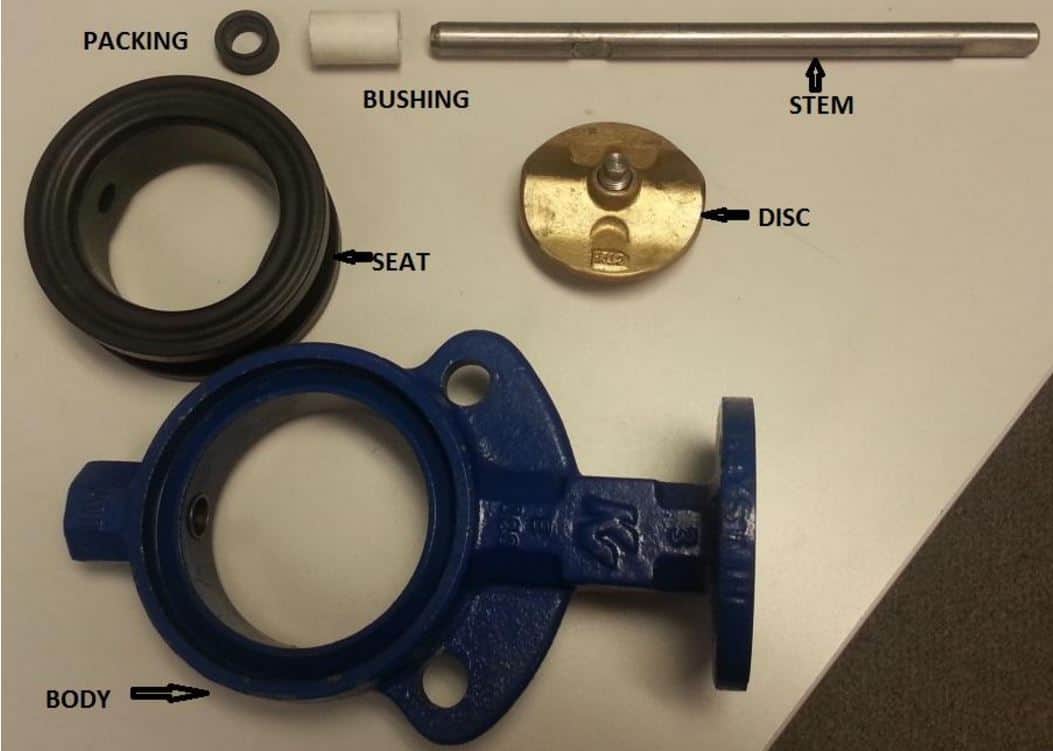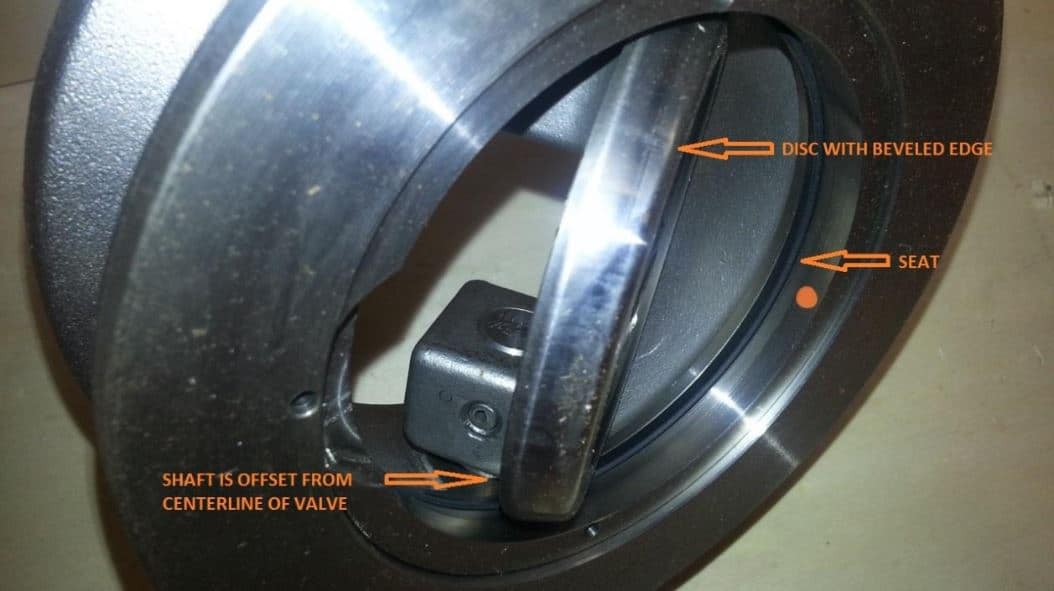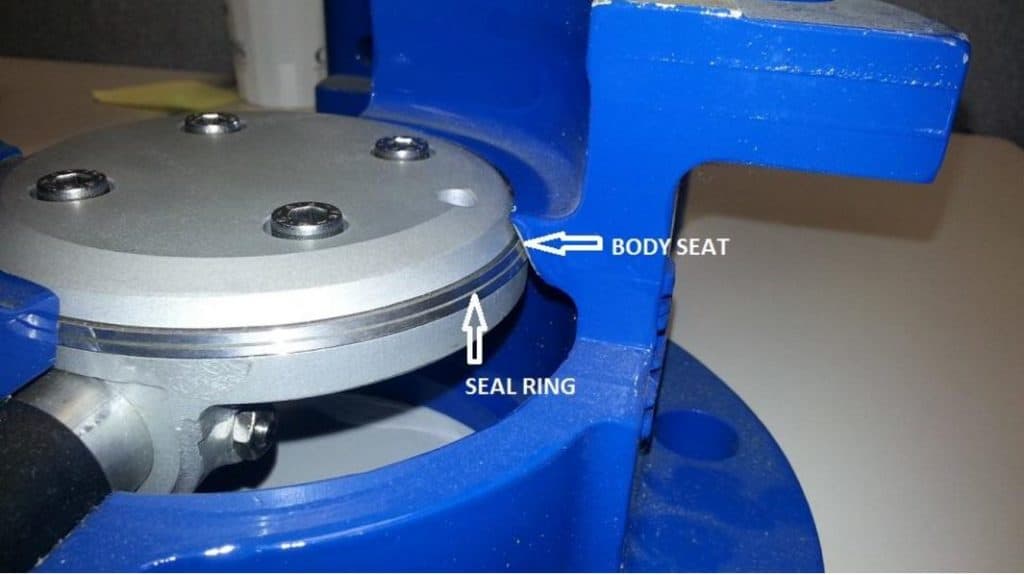A butterfly valve is a pressure vessel that controls flow through a pipe by use of a single disc mounted on a central shaft which creates a variable orifice.
Butterfly valves can be grouped into three basic types:
- Damper valve
- Resilient seated
- High performance
Damper Valves
A butterfly damper valve is basically a butterfly valve without a seat. The disc in the valve does not touch the inside wall of the valve. It will not shut off flow, because there is a gap between the outer diameter of the disc and the inner wall of the valve body it only slows down the flow of media in a pipe or duct . Damper valves are primarily used for controlling air or gaseous flow and are for low-pressure applications. Some common applications are heating and air ducts, exhaust vents, and chimney flues.
Components of a Butterfly Damper Valve:
- Body
- Disc
- Stem
- Operator
Resilient Seated Valves
A resilient seated butterfly valve includes a rubber seat between the outer diameter of the disc and the inner wall of the valve. This seat is mechanically attached to the valve body and the disc has an interference fit with the seat in the closed position. These valves do have a positive shut-off and can handle higher pressures. Some common ways that the seat is attached to the body are dovetail joint seats, cartridge seats, and bonded seats.

Dovetail Seats
The dovetail connection utilizes a male dovetail that is cast or machined into the inner wall of the valve body. The seat has a female dovetail molded into its inner diameter which fits over the male dovetail on the body. When compressed between two pipe flanges, the seat is locked into place. This design of seat is never to be used in vacuum applications as the seat is not bonded to the body and can be sucked away from the body. This can allow the disc to pinch or cut the seat when closing the valve.
Cartridge Seats
The cartridge design seats have a rigid metal or phenolic resin ring molded inside the rubber seat. The inside wall of the valve and the outer diameter of the seat are both smooth. The inside wall diameter is slightly smaller than the outside diameter of the seat. The seat is pressed into the body and is held in place by this interference fit. Cartridge seats tend to handle much higher pressures than dovetail seats and will also work for vacuum applications.
Bonded Seats
Bonded seats are glued or injection molded to the body of the valve and are not repairable if the seat gets worn or damaged. These valves tend to handle the most pressure and vacuum of any rubber seated valves. Many times, these are also the least expensive resilient seated butterfly valves.
This seat is slightly wider than the valve body on all of these seat designs so that when the valve is installed between two pipe flanges, no gaskets are needed. The stem, or shaft, of the valve passes through the seat and is sealed by the seat. Inside the neck of the valve, there is a bushing that keeps the shaft aligned and prevents metal to metal contact on the stem. Because of this seat and stem design, there is no need for a packing that holds pressure from inside the valve. The packing in these valves simply prevents dirt and dust from entering from outside the valve.

Components of a Resilient Seat Butterfly valve:
- Body
- Neck
- Disc
- Seat
- Stem
- Dust Seal (Packing)
- Bushings or Bearings
- Operator
High Performance Seated Valve

Double offset butterfly valve

Triple offset butterfly valve (cut-away demo)
A high performance butterfly valve uses a rigid PTFE, or metal seat, that is narrower than the valve body. This seat is mechanically retained inside the valve body. High performance butterfly valves are usually a double or triple offset disc design (see figures above).
The valve shaft does not pass through the seat on this design and the shaft does not pass through the center line of the disc. This allows the disc to cam into the seat which reduces the torque required to open or close the valve. A double offset design relies on the offset shaft and a bevel machined into the edge of the disc. The seat is the sealing component when in contact with the bevel on the disc. A triple offset valve adds an elliptical seal ring to the disc and uses the offset shaft along with a beveled seat. The seal ring on the disc is the sealing component on a triple offset when it is in contact with the beveled seat.
High performance butterfly valves require pipe flange gaskets when installed between pipe flanges. High performance butterfly valves handle the highest temperatures and pressures of any butterfly designs.
Components of a high performance butterfly valve:
- Body
- Disc
- Seat
- Seal Ring (triple offset design only)
- Seat Retainer
- Stem
- Stem Packing
- Bushings or Bearings
- Operator
Are you looking for butterfly valves for your facility? Our team has years of experience in selecting the perfect valve for any application. Contact us today to discuss your specific valve needs!
